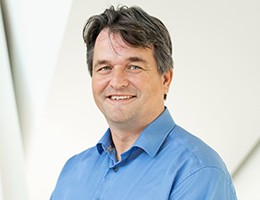The Fraunhofer Translational Center for Regenerative Therapies TLC-RT develops multifunctional (nano)particles for diagnostics and regenerative medicine.
A broad portfolio of materials and synthesis methods enables high flexibility in terms of design, material, effective targeting and type of detection methods. The particle systems bind biomarkers, encapsulate drugs and are detectable by various in vitro and in vivo imaging techniques such as photoluminescence-based detection, magnetic resonance imaging (MRI), magnetic particle imaging (MPI) and photoacoustic imaging.
Thus, the tailored particle systems open up new opportunities in the further development of individualized diagnostics and therapy.
Contact Press / Media
Dr. Sofia Dembski
Deputy Director of TLC-RT / Head of Biomaterials
Fraunhofer Translational Center Regenerative Therapies TLC-RT
Neunerplatz 2
97082 Würzburg, Germany
Phone +49 931 4100-516





